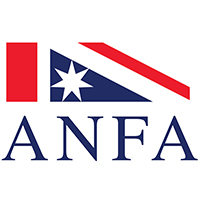Address by Sir Robert Menzies
Transcript of Robert Menzies
Parliamentary Speech – Flags Bill 1953
House of Representatives
20 November 1953
The bill is very largely a formal measure which puts into legislative form what has become almost the established practice in Australia. At the inauguration of the Commonwealth of Australia, the atten-tion of the Australian Government was directed to the necessity to adopt an Aus-tralian flag. As a result, an advertisement was published in the Government Gazette which invited the submission of competitive designs for two Australian flags, one for naval and official purposes and the other for the mercantile marine. It is interesting to record that 30,000 entries were received on that occasion, and the judges recommended that the prize for the winning design should be divided among five persons. They were Mrs. Annie Dorrington, of Perth, Mr. William Stevens of Auckland, Mr. Leslie J. Hawkins of Melbourne, Mr. Ivor Evans, of Melbourne, and Mr. E. J. Nuttall, of Melbourne. The design adopted was submitted to His Majesty King Edward VII. and he was pleased to approve of it as the Australian flag in 1902. However, no legislative action has ever been taken to determine the precise form of the flag or the circumstances of its use, and this bill has been brought down to produce that result.
If honorable members study the schedule to the bill, they will notice that it contains a representation in colour of the Australian National Flag and what is here described and is well known as the Australian Red Ensign. As every honor-able member knows, the flag bears three particular symbols. In the first place the Union Jack is included for obvious reasons. Under the Union Jack there-is a seven-pointed star. It was a six-pointed star until 1908, when the seventh point was added to represent the Australian territories. That star plainly represents the federation. The Southern Cross, which is situated in what is called the fly of the flag, indicates something that has a broad reference to the sentiment and setting of Australia.
The bill will set out legislatively something that represents common practice and a common view in our country. It declares the Australian Blue Ensign to be the Australian National Flag. It re-designates the Australian Red Ensign to be the Australian marine flag. It gives the Governor-General power over certain matters of detail. For example, the Australian flag from time to time will have upon it some added design for an official purpose. The flag that is used by the Prime Minister of Australia on certain formal occasions has the coat of arms added to it. I have been informed that whenever something is added to the flag, it is defaced. Therefore, there are references in the bill to defacing the flag or permitting defacing of the flag by making some change or addition. Finally the bill preserves the right of any person, if that is necessary, to fly the Union Jack. If is common practice in Australia, and one that will continue, to have the Union Jack and the Australian National Flag, which includes the Union Jack, both exhibited on notable public occasions. In brief, the bill makes no changes but puts into legislative form in a fashion that I am sure will be acceptable to all members and the nation, provision for the national flag, an indication as to its use, and authority to take steps which are consequential upon the establishment for the first time of the flag, its form, and the right to use it.
